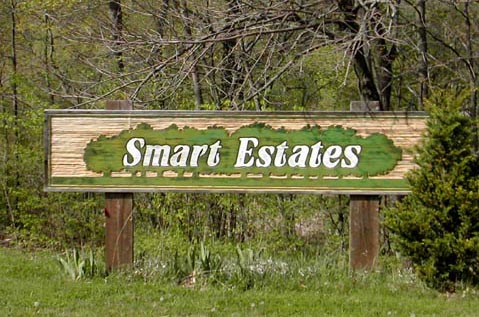

Newsletter
A View From The Edge
Issues in Rural and Metropolitan Fringe Planning
Ian Sinclair,
Principal Consultant, Edge Land Planning
Rural and Environmental Planning Consultants
As published in New Planner, The Magazine of the Planning Profession in NSW
Number 51, June 2002
Smart Growth or Smart Living?
This article is being written from the USA where I attended the American Planning Association's annual conference. It was an amazing conference. This is my 5th one but they just keep getting better. There were about 6,500 delegates!
Sprawling development and its impact on landscape and farmland as well as its social consequences have become one of the most important issues facing urban development and planning in the United States. Similar to the issues faced New South Wales, the US is facing environmental, social and economic impacts of urban sprawl. It is producing major changes in the communities across America which is also causing problems of sustainability - sprawl certainly is not economically, socially or environmentally sustainable, as we are discovering in Australia.
Smart growth is not a new concept. There have been many instances of growth management and the targeted preservation of land across United States. However as the urban sprawl has become a major national issue, there has been a concerted effort to try and address it. The term smart growth first appeared to in the American media in 1997 during the debate over a new legislative package in Maryland which was aimed at limiting sprawling patterns of low density residential development and arterial strip commercial development which were spilling outside of existing cities and villages. The Maryland Department of Planning states that "a smart growth pattern creates high-density mixed use and pedestrian oriented development that promotes efficient land use and increases transit ridership". One key thing is the mixture of controls and incentives.
Applying the concept to Australia, we are already doing a lot of the controlling but not enough incentives. There is a need to have a carrot as well as a stick.
The concept 'Smart Growth' is a good catchy phrase to describe what it is trying to achieve. However, I think that the term 'smart growth' is not the appropriate one for the Australian context. The term growth infers that all areas will grow, which is not the case in a lot of situations due to topographic and ecological concerns as well as proximity to watercourses. Therefore, I prefer to use the term 'smart living' because, in the end we are planning for areas in which people - and plants and animals - live.
When we are talking about smart living, the things to consider can be described by the following graphic. The relevant issues for a study or strategy can be grouped into 2 broad headings of Environmental opportunities and constraints and Social and economic factors. Underlying all of the issues is the philosophy of Ecologically Sustainable Development (ESD) and Total Catchment Management (TCM). The arrows on the figure show that all of the issues are interrelated and one cannot be considered in isolation from the other.

Smart living is a good phrase for what we do as planners. It needs a mixture of controls and incentives. We can learn from the incentives that the US are putting in place. One question to be asked is can it lead to smart estates as is the case in this photo taken on the outskirts of Kansas City?

Top of page...
launched March, 1999
copyright © 1999 - 2013 Edge Land Planning
All rights reserved.